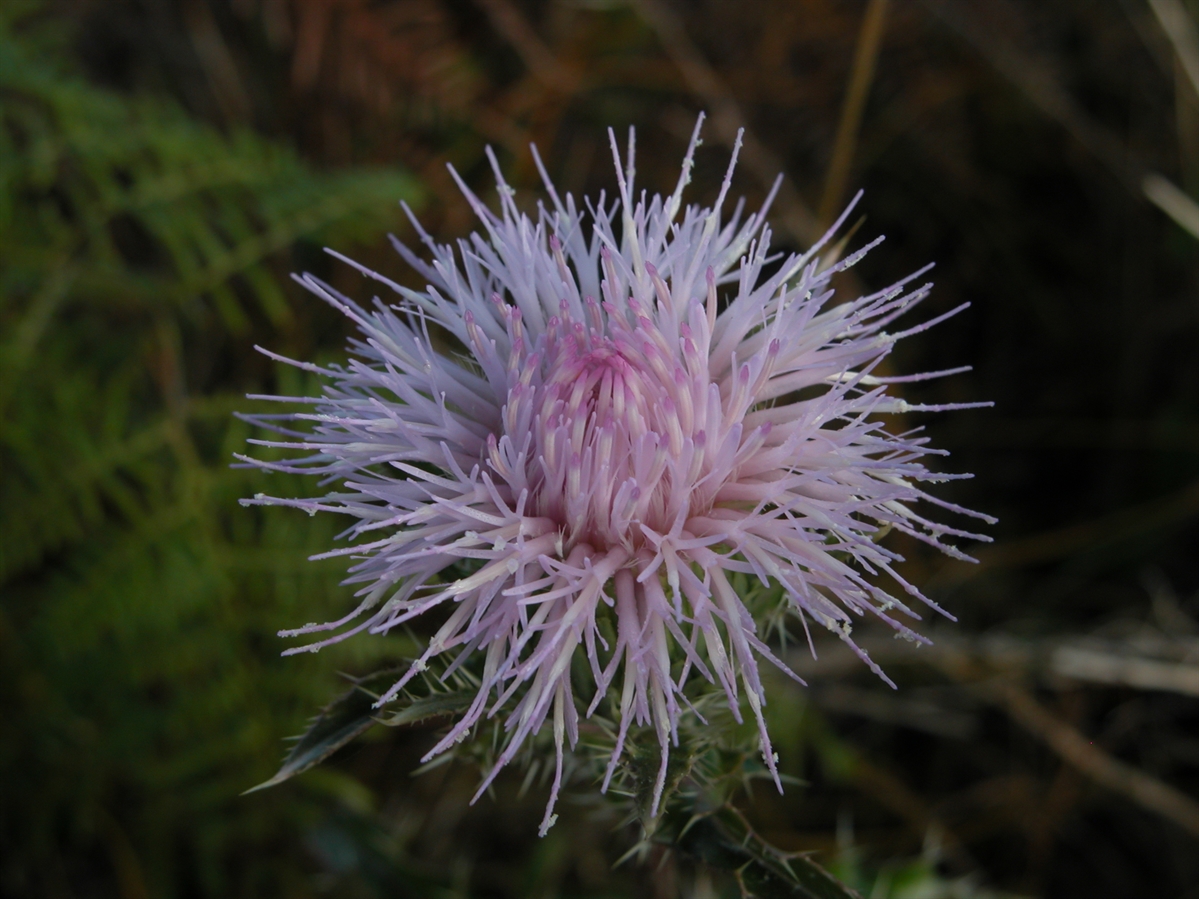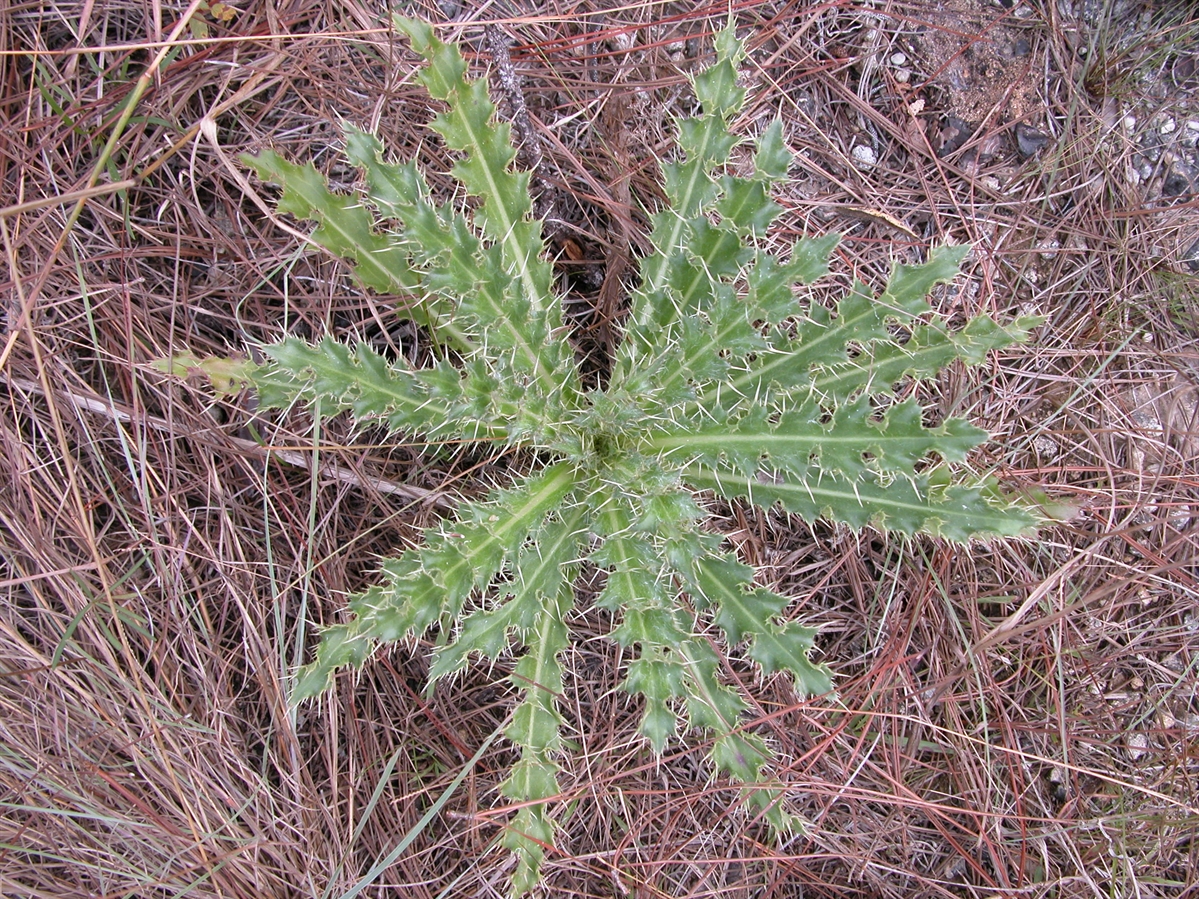Habit: Cirsium horridulum is a perennial herb up to 1 meter in height (usually less than 50 cm). Plants with leaves in a basal rosette until flowering time. Leaves then arranged alternately, linear to lanceolate to pinnatifid, to 30 cm in length and 5 cm wide, with pubescence that diminishes with age, margins spiny throughout.
The complete, perfect, actinomorphic flowers are arranged in heads that are terminal. The heads are large to 6 cm across and subtended by a series of spiny involucral bracts (phyllaries). The calyx is modified as a ring of small spiny projections (pappus). The corolla with 5 fused, purple pink lavender (sometimes yellowish) petals. There are 5 stamens fused at their base. The ovary is inferior with a single locule and seed. The fruit is an achene at maturity that retains the modified hair like calyx (pappus).
Habitat: Cirsium horridulum grows in Pine Woodlands.
Distribution: Cirsium horridulum occurs throughout in the northern islands (Abaco and Grand Bahama) of the Lucayan Archipelago, Mexico and the eastern United States.
Medicinal/Cultural/Economic usage: Cirsium horridulum is not known to be used medicinally in the Lucayan Archipelago.



